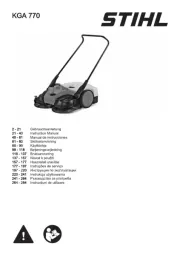Echo MB-440 Manual
Læs gratis den danske manual til Echo MB-440 (132 sider) i kategorien Andre haveredskaber. Denne vejledning er vurderet som hjælpsom af 49 personer og har en gennemsnitlig bedømmelse på 4.9 stjerner ud af 25 anmeldelser.
Har du et spørgsmål om Echo MB-440, eller vil du spørge andre brugere om produktet?

Produkt Specifikationer
| Mærke: | Echo |
| Kategori: | Andre haveredskaber |
| Model: | MB-440 |
Har du brug for hjælp?
Hvis du har brug for hjælp til Echo MB-440 stil et spørgsmål nedenfor, og andre brugere vil svare dig
Andre haveredskaber Echo Manualer






Andre haveredskaber Manualer
- Einhell
- Zgonc
- Germania
- GLORIA
- Kinzo
- Wolf Garten
- Lumag
- Masalta
- Gardena
- AS Motor
- Wolfgang Tools
- Ergofix
- Texas
- Toro
- Kärcher
Nyeste Andre haveredskaber Manualer









